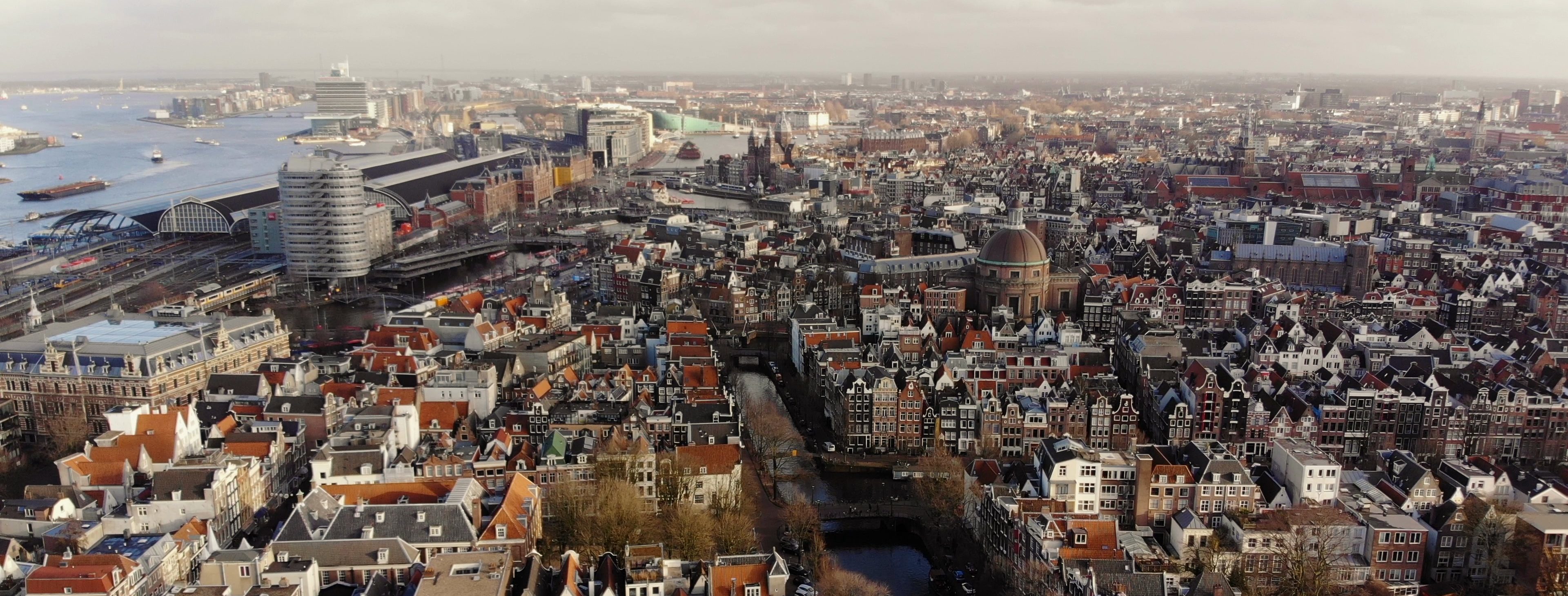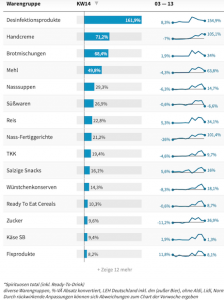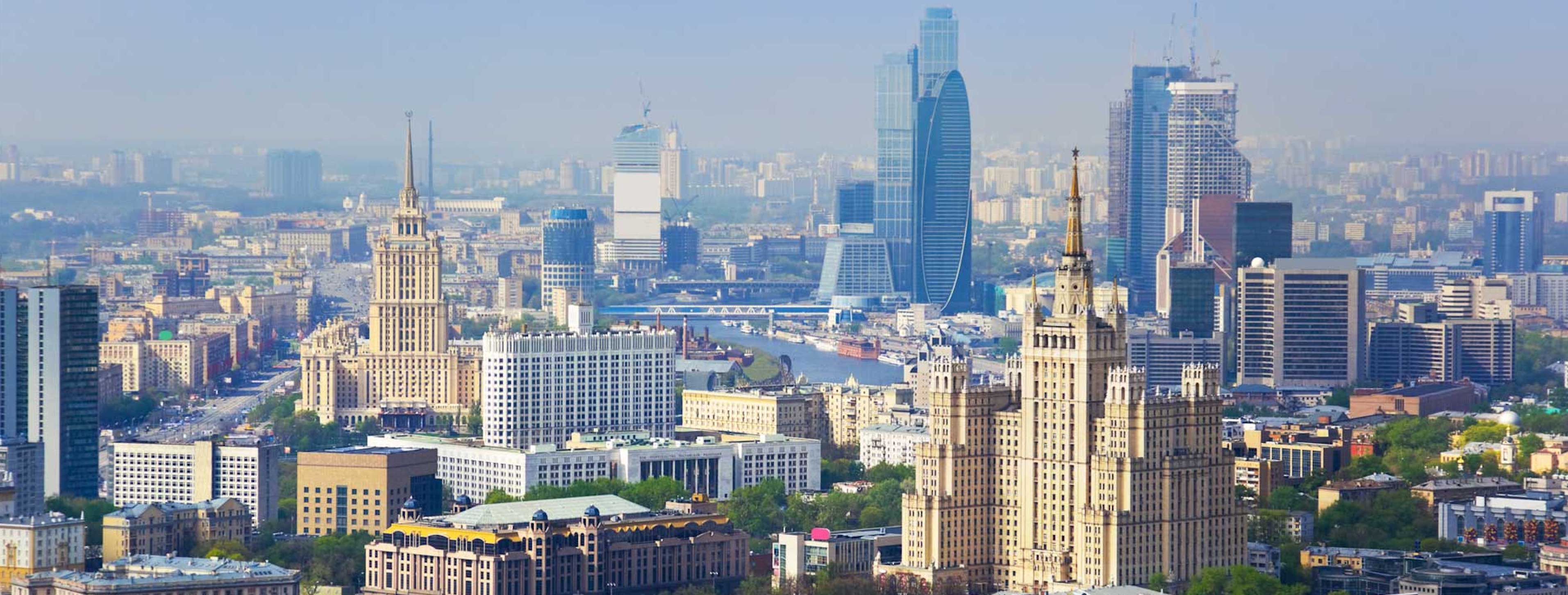
The impact of COVID-19 on retail from an international perspective
From an Austrian, Dutch and Russian point of view
These are strange times and we are all facing challenges that may have a permanent influence on the world as we knew it. The current situation has impact on all of is. Especially food retail had to work at hyper speed to keep the supply chain running and satisfy hoarding customers in their toilet paper demand.
Three of our colleagues shed their light on the current situation in their home countries. Chris is living near Amsterdam, Martin in Vienna and Ekaterina in Moscow. What is happening in retail and what are the challenges retailers are facing internationally? What are the differences and what are the similarities? We will analyse the situation using our retail framework, asking ourselves how COVID-19 influence retailers in the way: they talk, look, act and in what they offer.

THE NETHERLANDS
How we talk
In the Netherlands the retail sector was quick in responding to the new situation. Especially the big supermarket chains. They shared the measures they take, but in particularly that they would stay open and have enough in stock. Showing us their full warehouses on tv and placing big ads in the national newspapers. They also introduced early shopping exclusively for elderly people, to make it possible for the vulnerable people to do their own shopping in a save way.
In the Netherlands the government made a statement to not visit stores unnecessarily. And while a lot of the retailers are struggling the DIY and garden centres are extremely busy. A lot of Dutch people want to use their time productively and pick up the chores they normally do not have the time for.
How we act
The intention of the Dutch government is to keep the negative economic effects at a minimum. Interest groups are working together to keep these effects in check. For example, at the moment, banks, real estate companies, retailers and the government are in conversation about postponing – or even remitting – rent for retail units that suffer under the consequences of the virus. Also, for food service and hospitality concepts there are far reaching measures and financial support to avert bankruptcies. Retailers and the catering industries are doing everything to keep up their business and shift as much as possible to home delivery. Even restaurants do full experience home delivery, and the share of online retail sales are higher than ever.
How we look
In the stores that are open COVID-19 measures are hard to miss. A high percentage of the Dutch stores already have self scanning, and where you see employees they are often behind plexiglass. Routing and signing are adjusted, for example by fixed one direction routing to keep the Dutch ‘one metre and a half rule’. So, it’s now common practise to see a line of people waiting for a store entrance to await their turn to shop. The question is how long these measures will be instated and what will be the influence on future retail design.
What we offer
While supermarket revenue is growing – because of hoarding and the closure of other food solutions and restaurants – the question in the Netherlands is if the growth will hold. I see that the kind of products that people are buying is changing. I was a big user of pre-sliced and ready to cook solutions, which are high margin products, but currently I have more time at home, so more time to cook and less need for convenience products. During the holidays, we normally have big family dinners – again good business for the supermarkets – but last Eastern we did not come together. The current situation changes the sort of products we need – no pre-sliced broccoli but toilet paper, rice and canned beans.

GERMANY, AUSTRIA AND SWITZERLAND
How we talk
After the first shock of having to close down their store, the non food retail sector almost immediately retailers started to divert their communication efforts towards their “open” online stores. This move was combined with their massage of “buy local” in order to counter large retail giants like Amazon.
Food retailers on the other side went through two phases. In the first stage the focus lay mostly on ensuring a continuous flow of product supply. Due to a first run, or should we say panic, some also curious out of stock situations raised: yeast and toilet paper suddenly were on high demand. For keeping supply chain going, eg. in Austria the army supported the DCs, in Germany the staff from the headquarters were sent to the stores. Aldi, for the first time ever, produced a commercial showing their warehouse from inside to demonstrate their supply chain capabilities.
In the second phase when all became a little bit quieter, retailers changed their usually promotional driven commercials to a more “we will stand the crisis all together” message. They, in general, focus on the emotional side of the crisis in their communication approach.
How we act
For those retailers who were allowed to keep their stores open, a high turnover positively impacted their sales figures. Interesting to see is that overall traffic to the store decreased, while the average ticket increases. Due to the fact that the majority of customers need to stay at home the peaks in the later afternoon/evening in the stores has been diminished – customers go shopping during the day. Overall, this is of course good news for the food retailers – higher turnover, less traffic, but higher average tickets. However, on the downside these retailers needed to directly invest in new protective measurements to keep their staff and their customers safe and healthy. As in other countries, plexiglass protections, distance markers, etc. had to be installed within days.
How we look
All three countries reacted slightly differently to the virus. The most rigorous action has been taken in Austria, where a mask became mandatory for entering any store. This has forced retailers to source theses masks on an international stage, which has not been an easy task in times when the whole world is aiming to buy masks for their own people. Secondly, the stores had to make sure that customers would receive these masks at the entrance of the stores. To do so, small booths have been installed where freelance staff has been positioned for handing out masks and providing disinfection.
Furthermore, especially for the larger stores the number of customers being allowed to enter the stores at once has been restricted. For making counting easier, shopping carts became the tool for making this possible. By only providing the exact number of shopping carts allowed and forcing customers to use a shopping cart for entering the store the counting has been enabled.
What we offer
In Germany, Switzerland and Austria the “intelligent” lockdown has forced customers to change their behavior from one day to another. For food retail the first days have been the hardest, with turnover peaking higher than Christmas or any other festivities occasions.
The article groups with the highest increase (Germany) in the first weeks of the crisis have been disinfection materials (+161,9%), hand creme (+71,2%) and bread dough mixes (+68,4%).
What is clearly visible is the fact, that after 2–3 weeks the culmination figures are cooling down and some normalization starts. This relaxes supply chain and naturally also store staff.

Source: Nielsen

RUSSIA
How we talk
In Russia, only food retail and pharmacies are open for the physical visit. The rest of the retail outlets, such as shopping malls, DIY’s, drug stores and hospitality concepts are operating on-line only. This challenge is making very clear which companies are completely ready for digital transformation, and which companies are obviously struggling. There was a big “toilet paper rush” in the beginning, as well as everywhere in the world. Retailers were publishing pictures of full stocks to make people sure that there is no lack of products, but just some logistics issues. The Biggest neighborhood retail chain asked younger people to come to the stores after 10am, to let elderly people do their shopping before that time.
How we act
Russian companies have to find a way “on their own”. There are no strong governmental programs for supporting business yet. For some of the players this means as much as “no future”… But the bigger retailers with more reserves to fall back on take and show their responsibility. One of the biggest store chains, Magnit, offers employees of Burger King and McDonalds to work in their stores during the crisis and take over their wages. DIY stores came together to help customers which are eager to use this time to upgrade their homes. They do this from a general platform they set up where people can order any goods and get an advice.
For some of the pure online retailers the time is to grow now. Most of the food retailers lack capacity to fulfill customers’ wishes and are not capable to answer on customer demands when it comes to delivery. The online service called Samokat is delivering fresh products in biggest cities within 15 minutes using a “no contact” policy. The market is consolidating. It is nice to see how yesterday’s competitors come together to strengthen each other.
How we look
There are no big queues. Most people buy online, or only do their groceries once or twice a week. There are routing signs on the floor which keep people in safe distance. Some retailers add more self checkouts. When you deal with cashiers, they are bordered with plexiglass often. Many people are grateful to store staff, knowing which risk they take every day.
What we offer
Lots of people have lost their jobs already. And there is much uncertainty. But Russian people are quite used to crisis situations and we are still joking about the way we will “roll out” of our houses after this crisis, because everyone is eating away the stress. In general, food retail is growing with a 10–20% growth turnover. We buy more and we cook more, people who used to lunch at work (or at school) don’t do that anymore. And sometimes it is hilarious – when a famous doctor advised the lemon ginger drink that can help strengthen the immune system on the internet, that same day all lemons and ginger roots disappeared from the shelves.

CONCLUSIONS AND POTENTIAL CONSEQUENCES
Unless we will quickly find a medicine to fight the virus, there is still a high potential that the virus will bounce back to our society regularly. And if it is not Covid-19 it may be another virus occurring.
For this reason, we might be confronted with some new regulations for designing stores in the future. This might be the need to increase the overall spaces for securing customer spaces within the aisles in the store. This might be entrance control/counting units, this might be obligatory self checkout units, drive-in pick-up stations etc.
We will see, looking back, if and how governments will react to this, and if and how retailers will have to find innovative and creative solutions. Technically, there are many ways to start this search.
